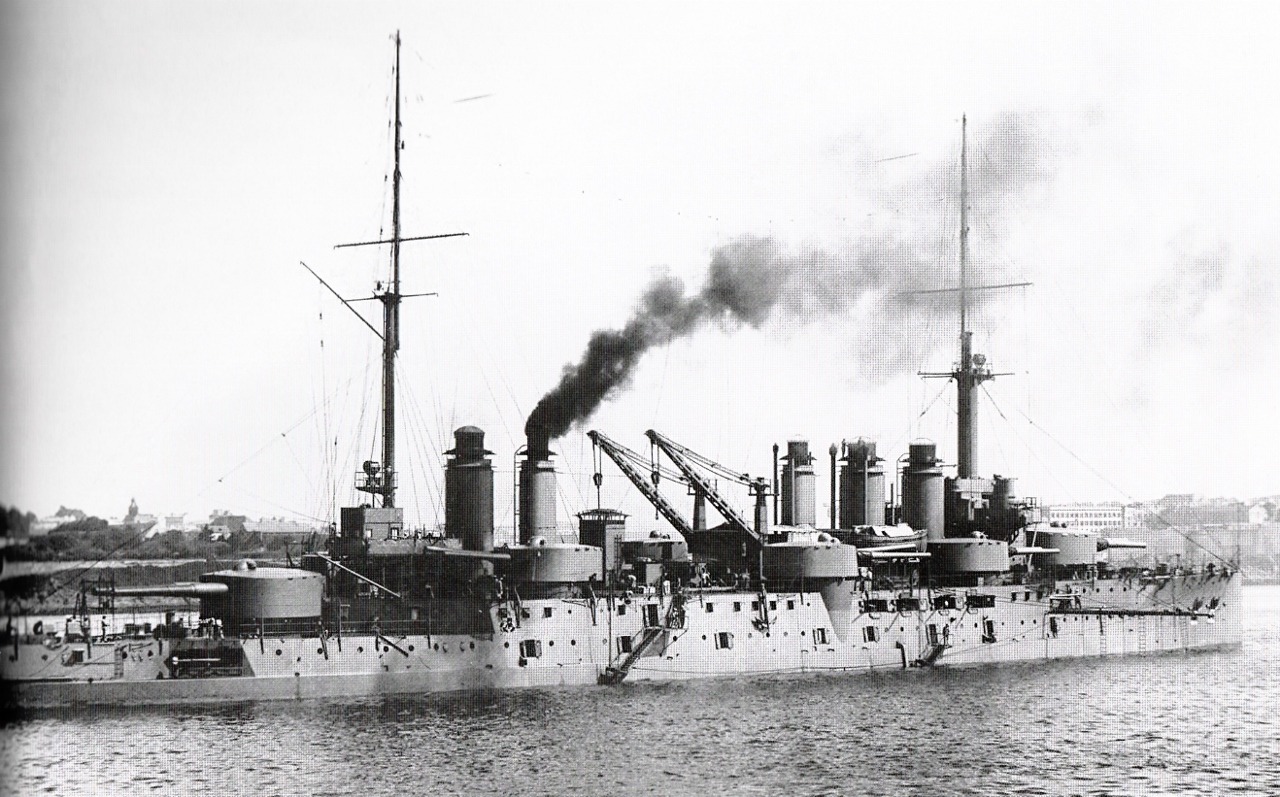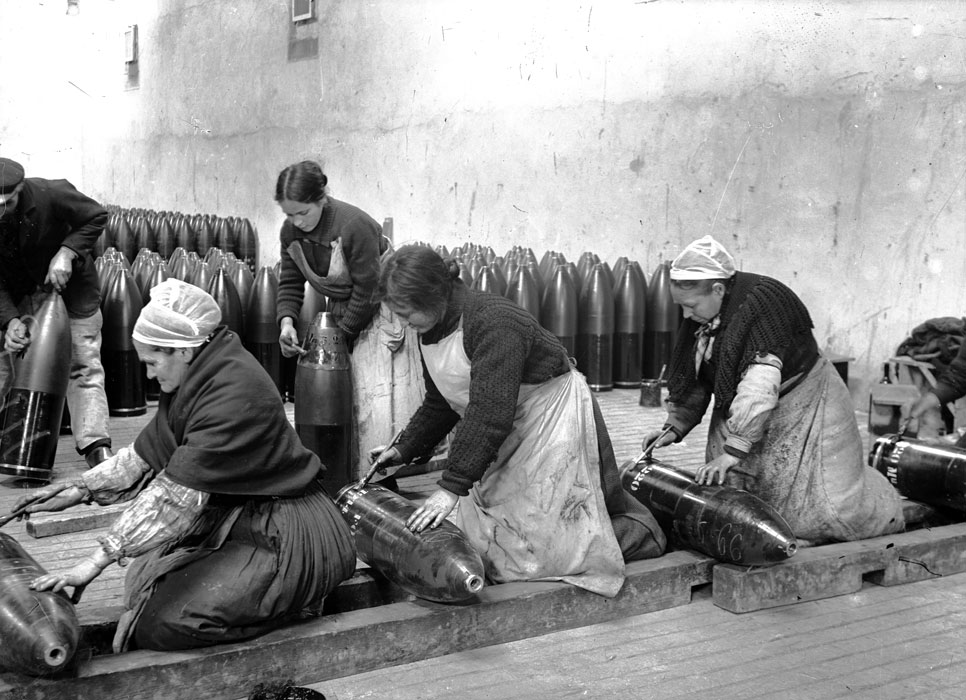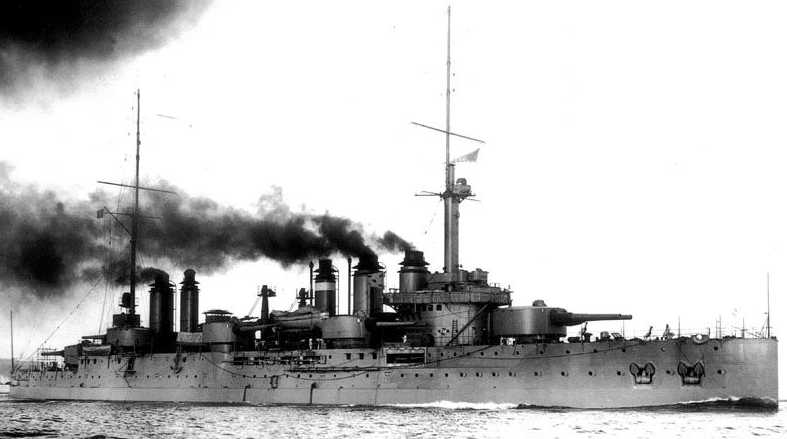A complicated built-up weapon with a good rate of fire designed specifically for the Danton class. After the ships were scrapped the guns were used as coastal artillery during World War II.
French guns designed between about 1902 and 1922 were designated in centimeters. Actual bore length was 48.92 calibers.
Some of the AP projectiles for these guns were later converted to aircraft AP bombs.
| Designation | 24 cm/50 (9.45") Model 1902-1906 |
|---|---|
| Ship Class Used On | Danton class |
| Date Of Design | 1902 / 1906 |
| Date In Service | 1911 |
| Gun Weight | 29.09 tons (29.55 mt) including breech mechanism |
| Gun Length oa | 481.11 in (12.220m) |
| Bore Length | 447.28 in (11.361 m) |
| Rifling Length | N/A |
| Grooves | 72 grooves at 4 degrees |
| Lands | N/A |
| Twist | RH 1 in 57 |
| Chamber Volume | 6,798 in3 (111.40 dm3) |
| Rate Of Fire | 3 rounds per minute |
| Type | Bag |
|---|---|
| Projectile Types and Weights | AP 1: 487.2 lbs. (221 kg)
HE: 487.2 lbs. (221 kg) |
| Bursting Charge | 14.5 lbs. (6.59 kg) melinite (2.6%) |
| Projectile Length | about 33.3 in (84.5 cm) |
| Propellant Charge 2 | 148.2 lbs. (67.2 kg) BM15 |
| Muzzle Velocity | AP: 2,625 fps (800 mps) |
| Working Pressure | 16.5 tons/in2 (2,600 kg/cm2) |
| Approximate Barrel Life | N/A |
| Ammunition stowage per gun | N/A |
- ^AP was a dual-fuze, heavyweight design similar to that used for the 30 cm/45 AP projectiles.
- ^Propellant charges were in thirds.
- Aircraft AP bomb weighed 487.2 lbs. (221 kg).
| Designation |
|
|---|---|
| Weight | N/A |
| Elevation | -5 / +13 degrees |
| Elevation Rate | 3 degrees per second 1a |
| Train | about +80 / -80 degrees |
| Train Rate | 6 degrees per second 2a |
| Gun recoil | N/A |
| Loading Angle | Between -5 and +11 degrees |
- ^Manual elevation was possible with a single crewman able to elevate each gun at 1.0 degrees per second.
- ^Manual training was possible with three crewmen required with training speed reduced to 2.5 degrees per second.
- These turrets were similar in concept and design with those used on contemporary armored cruisers. There was a cylindrical working chamber suspended beneath the gunhouse and rotated with it. The hoists between the magazines and working chamber were fixed. The working chamber held the winches and motors for the upper hoists and the transfer equipment for moving the projectiles and rounds between lower and upper hoists.
- The magazines and shell rooms were on two levels. Each of the third charges was stowed in a case of soldered tin and the cases were stowed on shelving. Projectiles were stowed horizontally on wooden racks in the shell rooms.
- The Danton class had six ready projectiles for each gun and a total of thirty-six third charges were stored in each turret.
- The turret captain was equipped with a Barr & Stroud 1.37 m (54 inch) FQ2 rangefinder.
- Armor thickness for the Danton Class as given in "French Battleships of World War One:"
Face: 8.9 in (22.5 cm) FH over two layers of 0.6 in (1.6 cm) plates
Sides: 7.4 in (18.8 cm) FH over two layers of 0.6 in (1.6 cm) plates
Rear: 7.4 in (18.8 cm) FH over two layers of 0.6 in (1.6 cm) plates
Roof: Three layers of 0.9 in (2.4 cm) plates
Floor: 2.4 in (6.0 cm) over two layers of 0.8 in (2.0 cm) plates
Barbette (parapet tronçonnique) above weather deck: 6.1 in (15.4 cm) over two layers of 0.5 (1.2 cm) plates


"Naval Weapons of World War Two" by John Campbell
"Naval Weapons of World War One" by Norman Friedman
"French Battleships of World War One" by John Jordan and Philippe Caresse
"Navies of the Second World War - The French Navy" by Henri le Masson
---
Tony DiGiulian's personal files
18 November 2005 - Benchmark
07 January 2012 - Added picture of shells
02 August 2018 - Converted to HTML 5 format, reorganized notes, added details on guns, ammunition and mountings

